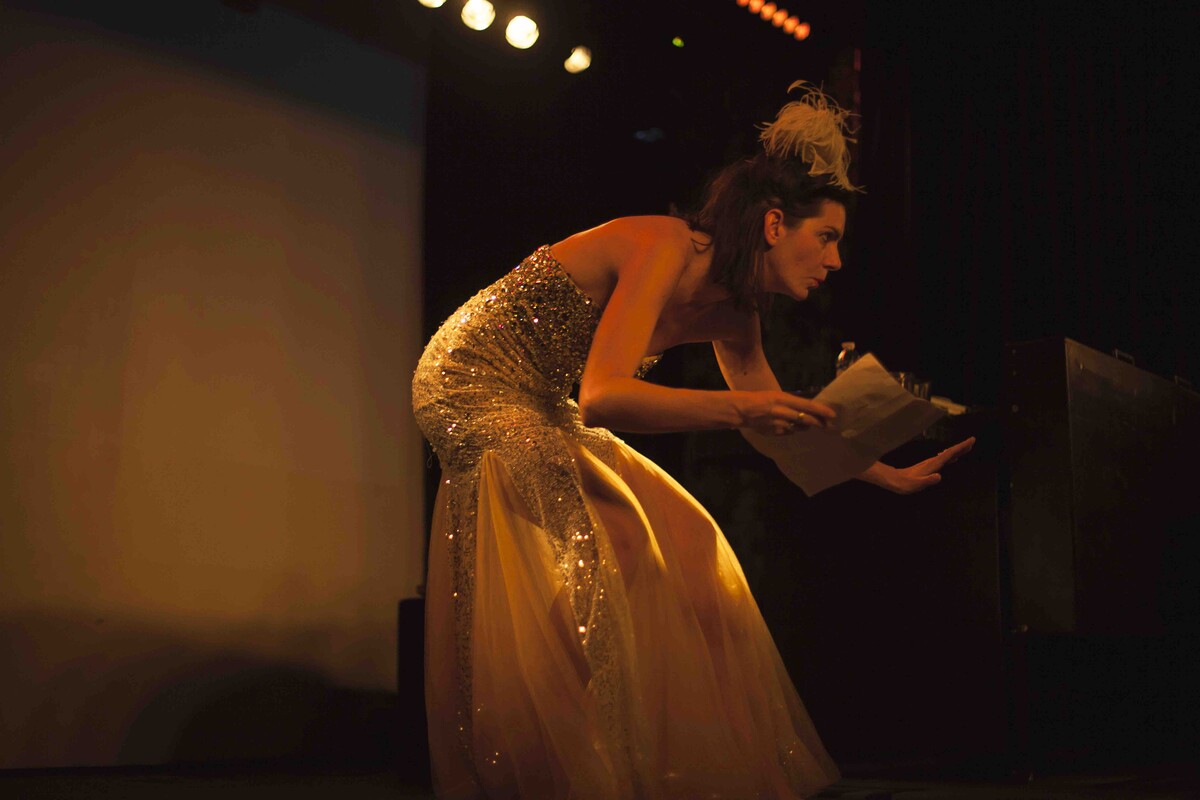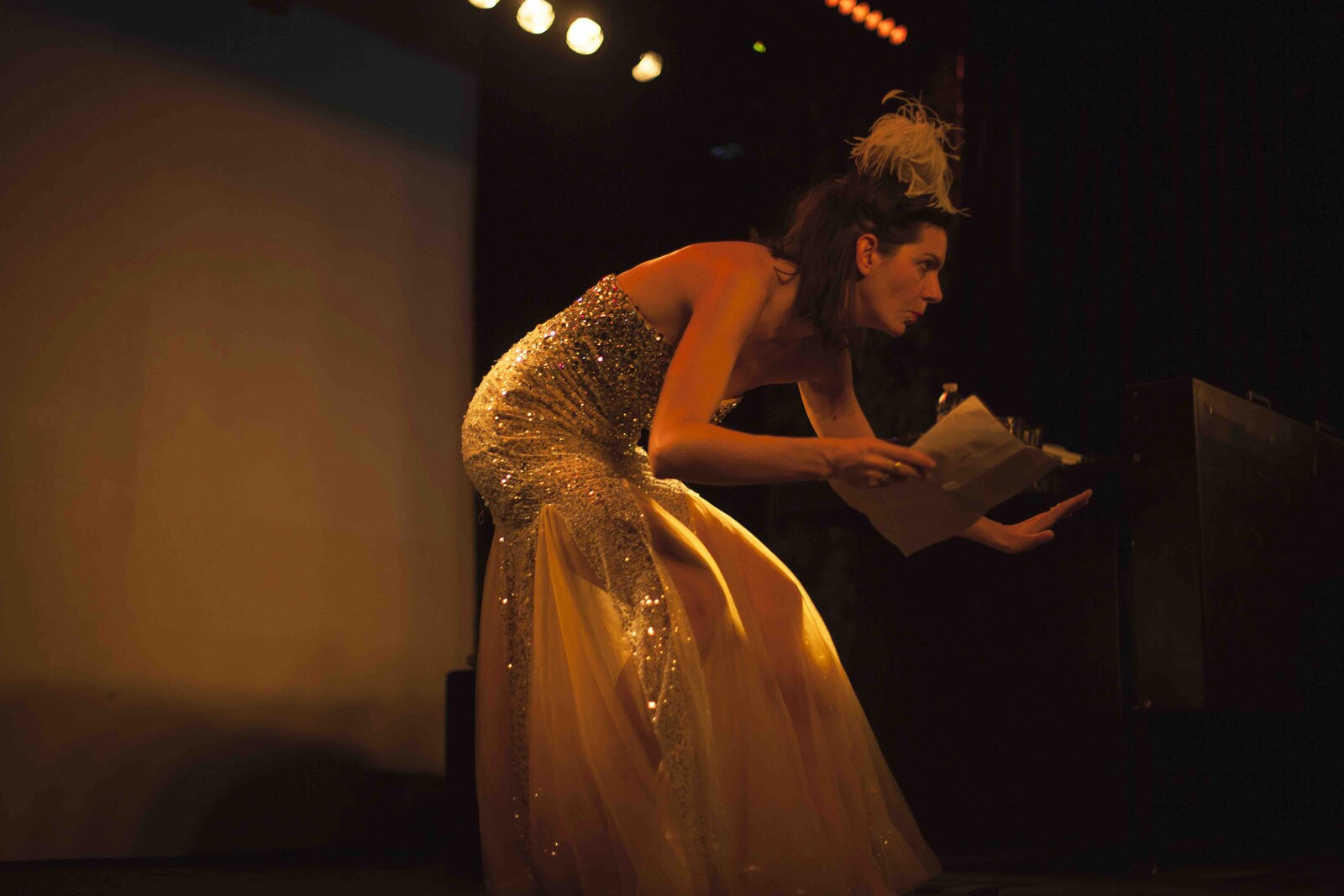Meta is a collaboration between art-agenda and TextWork, editorial platform of the Fondation Pernod Ricard, which reflects on the relationship between writers and artists. In this edition, art-agenda’s editor-in-chief talks to Julie Béna, whose work in installation, film, and performance makes use of such literary devices as absurdist humor, destablizing allusions to high and low culture, and metafictional characters plucked from sources ranging from William S. Burroughs’s Naked Lunch (1959) to the brand mascot Mr. Peanut.
art-agenda: In your new film, Letters from Prague, you play the role of an art critic. How did that feel?
Julie Béna: The Jindřich Chalupecký Society commissioned me to conceive a new performance about the Czech essayist, philosopher, and critic after whom the society is named. Because of the current situation and my doubt about an online performance, I decided to do a movie instead. In any case, it was difficult to embody a man, an art critic, and an historical figure. In the first part, I embody Chalupecký himself, based on a critical text I wrote, oscillating between fury, hysteria, and seriousness. The second part is an animated tale called “DICKS WINGS AND GRILL.” In the final part I perform myself as a mother, with a special appearance by my four-year-old daughter. It’s a sort of stand-up singing show. In the whole film, I am escaping the character of male art critic I was asked to embody to be what I am, meaning a cis woman, artist, and mother.
aa: You’re telling me that it’s difficult to embody an art critic. Is it difficult to embody an artist?
JB: The difficult task for me is to embody the reality of somebody who already had a voice, a body, a history. That’s why I am using myself as a role, as a character: my own history reflects a wider one. I can speak for myself, but I have questions about taking on the voices of others. The only “real” person in my work before Chalupecký was Anna Morandi Manzolini, an eighteenth-century anatomist, and I had to create The Jester to be able to speak for or with her.
aa: In your 2020 digital animation The Jester and Death, the Jester, who is also your avatar, meets William Blake, another artist working at the crossroads of words and images. Who are your favorite writers? How do they influence your work as an artist?
JB: Françoise Sagan, Joachim Topol, Christian Bobin, Céline Minard, Arundhati Roy, Orhan Pamuk, Elsa Dorlin, Diderot, Karel Čapek, Kathy Acker, Abdourahman Waberi, Ernst Jünger, Dan Simmons, Nathalie Quintane, Bohumil Hrabal, Jo Güstin. It’s difficult for me to name only a few, because I feel I’m betraying others. I find everything I need inside texts, more than in films actually. Maybe because texts allow me the space and time to build and think through them. You set the timeframe in which you read a text: it can be in a single sitting or over the course of years. Sometimes when I read a book a second time I remember a different story. It’s as if I dreamed some parts.
aa: Your work often has a dreamlike quality. It pushes up against the conventions of language, revels in wordplay and paradox. Is it frustrating to see it interpreted through the often fixed categories of art criticism?
JB: During my first years as an artist, I always felt under the radar of art criticism, whether because my work never really fit the “trends,” the space for real criticism had shrunk, or because my work was just not interesting. Now, as I am getting older (“not so young but not so old!”), I fear texts about my work, which is not very easy to grasp. You can find yourself with writing that simplifies or misinterprets. It is also linked to the unsustainable economy of art criticism. It’s very difficult for a writer to invest time when criticism pays so little.
aa: In Have you seen Pantopon Rose? (2016), Rose does not speak, though she is surrounded by people willing to speak on her behalf. She finds other forms of expression, specifically dance. Are there forms of expression that should not be reduced to language?
JB: Ah, Rose is a long story… but yes, a choir is speaking for her because she is not speaking. But maybe she doesn’t want to speak, maybe she wants to listen and experience in other ways, maybe she is trying to define herself through other voices, maybe the others are her voice. Meanwhile, that you don’t speak doesn’t mean you can’t express yourself! She is mimicking, her body is speaking for her, she is dancing. I think the accent here is on who has the right to speak. Language is no more or less reductive a form of communication than others.
aa: Maybe my question reveals something of the art critic’s own prejudices: the assumption that language is primarily verbal. There’s a line I like in Who wants to be my horse (2019): “Comedy makes me feel serious.” What is the role of humor in your work?
JB: This sentence is an abstract of “Why I Never Made It As A Comedian,” a televised skit by Carol Leigh, aka The Scarlot Harlot. As I started putting myself more and more in the work, I used humor to ridicule myself. I have a problem with people taking themselves too seriously, so it is my way to break the ego. It is so difficult in the art world to make anybody laugh or even smile at a joke in a performance (or maybe I’m just not funny). It seems that this oscillation between comedy and tragedy makes people uncomfortable. But, at the end, I don’t think I am willing to create a zone of comfort with what I am saying or doing. It’s also very present in Czech literature, this shady zone, the grey humor with a kind of anxious aftertaste. And we should preciously guard some shadow zones. Some uncertainty, opacity, wildness… But actually, what do you think? What should art criticism look like?
aa: Well, in an ideal world, I guess art criticism would be as varied in terms of forms and approaches as the field of contemporary art it addresses. My feeling about the future of art criticism is that it might be less about an authoritative interpretation than about staging an encounter in the shadow zone that separates one way of reading the world from another. A conversation, I guess, like this one.
Letters from Prague will be exhibited in Julie Béna’s forthcoming solo show at the Villa Arson, Nice, which is scheduled to open in March 2021. Wong Bing Hao’s essay for Textwork on the work of Julie Béna, “proxy pétillant,” can be read here.


